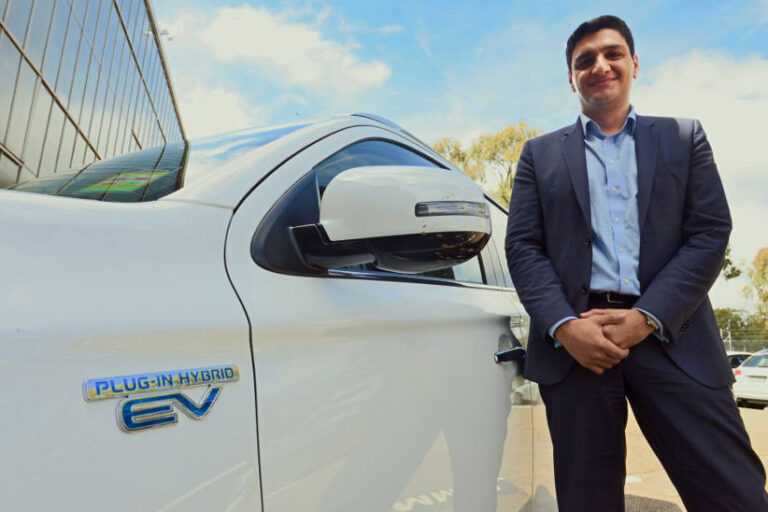Fleet Auto News’ Caroline Falls talks with Behyad Jafari, CEO of the Electric Vehicle Council, about the status of EVs in Australia, why fleet managers should think about air quality among their work safety considerations, and what he’d like to see happen this year to encourage EV take up. This is an edited version of the interview.
FAN: Behyad, I first encountered you in 2017, when you made a compelling presentation at the Sydney International Convention Centre, at a conference called Renewable Cities. The EV Council had just been established and you were pretty new in your position as I recall. Can you give us a quick history of the council and its key objectives?
Jafari: We formed in 2016 as an industry association representing a number of sectors — electricity companies, vehicle companies, also people looking to invest in things like building charging infrastructure, supplying them things like batteries, and software. Our main goal is how can we, here in Australia, given our market’s behind other countries, give certainty to investors to allow them to do the things like bring more lower price vehicles to our country, and roll out infrastructure. We help consumers of electric vehicles understand the technology and understand how it meets their needs.
FAN: Now I’d like to get some statistics from you. How many EVs are on the road in Australia as at the end of 2019? And what is the expected number that will be sold in this country in 2020? And one more, what is that as a proportion of total vehicle sales in Australia in the year?
Jafari: Midway through 2019, we had somewhere just shy of 10,000 electric vehicles on our roads. In 2019, it’s looking like we sold above 6,000 new electric vehicles; compared with 2018 where we sold 2,200. That’s a sizeable jump, but it’s a bit of a gap from where we’d like to be compared to other countries. It’s somewhere like 0.5 percent of all new vehicles being electric in Australia last year. When we look around the world — the US, Europe, Asia — what we see is around 3.5 percent, so for Australia that would mean something like 40,000 EV sales. So there is still room to grow. The good news is we’re going in the right direction and it’s getting faster and faster each year.
FAN: It seems to me that one of the easiest ways for a company to improve its green credentials, or cut carbon emissions, would be to replace traditional internal combustion engine vehicles with EVs or hybrids? Do you agree? Have you done any studies to show what impact replacing ICE vehicles with EV makes?
Jafari: Absolutely. Using electric vehicles is an efficient way to reduce your carbon footprint as a company, because it doesn’t require something extra. All it requires is for you to stop (using petrol or diesel). It’s not like you are trying to buy a carbon credit for instance and offset the emissions you are creating. Of course, there’s a bit of work that goes into understanding the technology, and understanding how to integrate it into your fleet, understanding what the new pricings are: not just for buying the vehicles, but also for how much it costs to run. But once you do that there’s a one-off transaction and you are off and running; you have dramatically reduced your carbon emissions every year.
Caroline: What are some other studies you may have been involved with that you think Australian fleet managers would benefit from hearing about?
Jafari: Sometimes it sounds a bit abstract to talk about emissions. Of course it’s much less abstract now in Australia because we are seeing the impact — exacerbating bushfires and exacerbating the impacts of droughts. When you are driving a vehicle, you are releasing that pollution on the road. Some of the research that we did last year shows that before the bushfires people couldn’t usually see smoke in front of their faces, but that doesn’t mean it wasn’t there. Exhaust fumes are on the roadside and what we’ve found through academic research is more people dying and getting sick as a result of vehicle emissions than from things like car crashes. It was a number above 1,700, wheras 1,200 people a year die from car crashes.
Caroline: What is your dream wish list of what you want to see happen sooner rather than later in Australia. Maybe it’s government policy, maybe it’s a fleet management attitude, maybe it’s about membership of the EV Council?
Jafari: All of the above. Speaking to the fleet audience at Fleet Auto News what we do already know is that for a portion of your fleets, electric vehicles are already in the money. Being a new technology, that requires a bit of education and we have got programs like the Charge Together Fleets program that provides some of that content. The hope is that more and more companies reach out and ask us questions so we can continue the journey.







